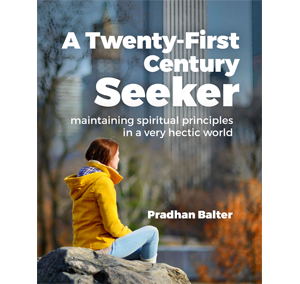What are pranayama breathing exercises
Pranayama breathing exercises, a fundamental aspect of yoga, are techniques designed to gain mastery over the respiratory process while recognizing the connection between the breath, the mind, and the emotions. They involve various methods of inhaling, exhaling, and retaining the breath, each with its unique benefits.
The benefits of pranayama breathing exercises are manifold and holistic. They contribute to physical, mental, and emotional well-being. Physically, pranayama exercises can improve lung capacity, enhance blood circulation, and boost the immune system. Mentally, they can help reduce stress, improve focus, and promote better sleep. Emotionally, pranayama can help manage anxiety and depression, fostering a sense of inner peace and balance. Thus, pranayama breathing exercises offer a comprehensive approach to health and wellness.
The following text is the excerpt from 222 Meditation Techinques by Sri Chinmoy
One-four-two breathing
We have a traditional system of controlled breathing in India, which is called pranayama, control of the life-breath. Prana is the vital energy, the life-breath; yama means control. The very first exercise you can practise is to repeat once, as you breathe in, the Name of God, the Christ or whomever you adore. Or, if your Master has given you a mantra, you can repeat that. This breath does not have to be long or deep.
Then hold your breath and repeat the same name four times. And when you breathe out, repeat two times the name or mantra that you have chosen. You inhale for one count, hold your breath for four counts, and exhale for two counts, inwardly repeating the sacred name. If you simply count the numbers—one- four-two—you do not get any vibration or inner feeling. But when you say the Name of God, immediately God’s divine qualities enter into you. Then, when you hold your breath, these divine qualities rotate inside you, entering into all your impurities, obscurities,
imperfections and limitations. And when you breathe out, these same divine qualities carry away all your undivine, unprogressive and destructive qualities.
The beginner starts with a one-four-two count. When he becomes mature in his breathing, he will be able to do it to a count of four-sixteen-eight: breathing in for four counts, holding the breath for sixteen, and breathing out for eight. But this has to be done very gradually. Some people even do this with an eight–thirty-two–sixteen count, but this is not for the beginner.
Alternate nostril breathing
Another thing you can try is alternate breathing. This is done by pressing the right nostril with the thumb and taking in a long breath through the left nostril. As you breathe in, repeat God’s Name once. Then hold your breath for four counts, repeating God’s Name four times. And finally release your right nostril, press your left nostril with your fourth finger and release your breath to the count of two—that is, two repetitions of God’s Name. Then do it the opposite way, starting with the left nostril pressed closed. In this system, when you breathe in, it does not have to be done quietly. Even if you make a noise, no harm. But, of course, these exercises should not be done in public or where other people are trying to meditate in silence.
You should not practise one-four-two breathing for more than four or ve minutes, and you should not do alternate breathing more than three times. If you do it twenty or forty or fifty times, heat will rise from the base of your spine and enter into your head, creating tension and a headache. It is like eating too much. Eating is good, but if you eat voraciously, it will upset your stomach. This heat acts the same way. If you draw it up beyond your capacity, then instead of giving you a peaceful mind, it will give you an arrogant, turbulent and destructive mind. Later, when you have developed your inner capacity, you can do this alternate breathing for ten or fifteen minutes.
Pranayama is a traditional yogic discipline with many serious, complicated breathing exercises. They can be dangerous if they are not done properly or if you do not have a teacher to guide you at every step. But these exercises that I am telling you about—the one-four-two count and alternate nostril breathing— are very simple and, at the same time, effective. They will never harm your lungs.
Excerpt from 222 Meditation Techinques






